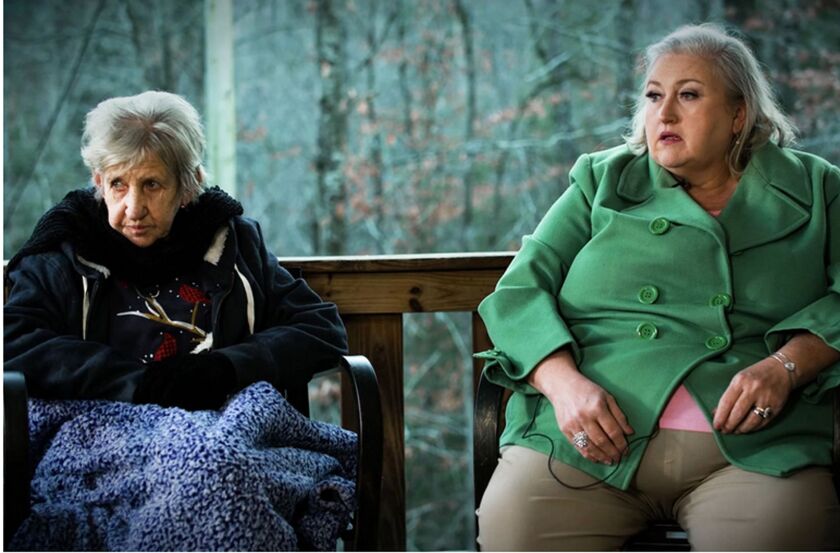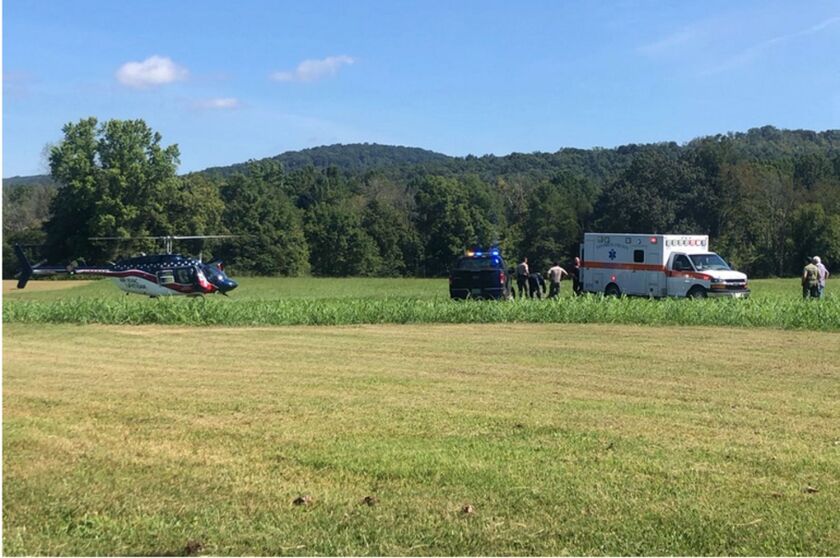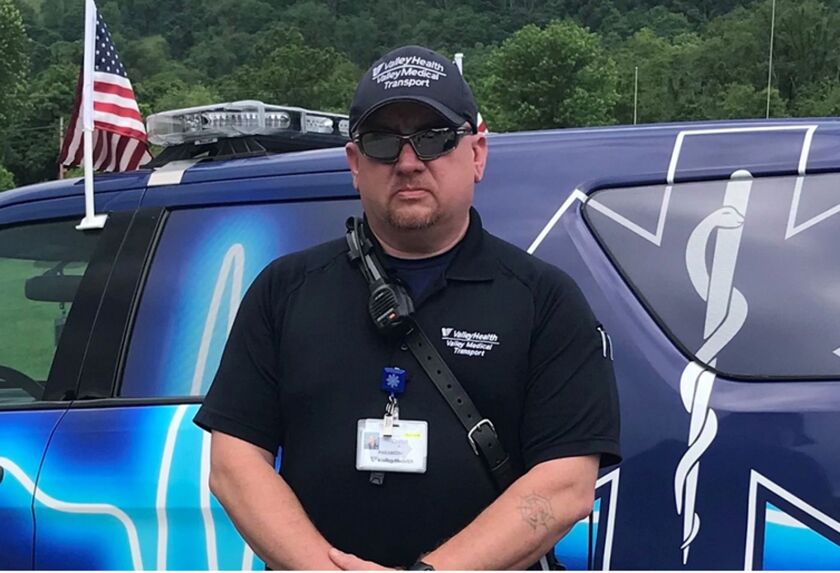Debbie Cook was in her pajamas on a summer morning in 2019 when she got a call from her son: “Something bad is wrong with Granny.”
The fear in his voice told Cook it was serious. She dialed 911 immediately, knowing it could take time for an ambulance to navigate the country roads in Fentress County, Tennessee.
She got dressed and made the short drive across the family farm, over two bridges and a creek to her mother’s house. Cook prayed that one of the three ambulances covering their roughly 500-square-mile county was near.
When she arrived, she found her mother Lottie Crouch in the bathroom, unable to stand or walk. Cook, a licensed practical nurse, recognized the signs: lopsided face, one side of the mouth drooping.
Her mama was having a stroke.
“I was petrified,” Cook says.
She started her career working with stroke rehabilitation patients and knew that getting the right care fast could mean life or death or a big difference in her mother’s quality of life. Crouch was 75 and still energetic and loved doing things like firing up a kettle of soup for herself. To continue living the life Crouch knew, each step toward getting care in a rural area had to go right.
But when the paramedics arrived, one of the biggest questions was: Where would they take Crouch for care?
Across the nation, nearly 800,000 people have strokes each year. The issue is particularly acute across the regions of Appalachia and the Mississippi Delta, where more than 80% of counties have stroke death rates above the national average. Many also face high rates of poverty, have vulnerable elderly populations and have a shortage of medical providers or have seen hospitals shut down.
In Tennessee, two million people — nearly one-third of the state — are people like Crouch who live more than 45 minutes from a hospital that is stroke-certified and able to provide the most advanced care, according to an analysis by KHN and InvestigateTV. Rates are even higher in Delta states such as Arkansas and Mississippi, where more than half the people would need to drive more than 45 minutes to those specialized stroke centers.
The analysis is part of a yearlong project called Bridging the Great Health Divide, in which KHN and Gray Television’s InvestigateTV national investigative team are digging into health issues that have plagued these regions, stroke chief among them. Despite advancements in stroke care, routing patients from rural parts of Appalachia and the Delta to the appropriate facility is an intricate jigsaw puzzle.
“There’s not the same one correct answer for all patients,” says Dr. Raul Nogueira, an interventional neurologist at Grady Memorial Hospital in Atlanta.
Where a patient should be taken for care “really depends on travel time,” he says. “It’s all about time.”
For years, the advice for stroke patients has been to get to the nearest hospital as soon as possible. A stroke cuts off blood flow to part of the brain. The sooner that blood flow can be restored the better. So the idea has been to get patients to any doctor quickly.
But research shows some stroke patients benefit more from advanced procedures typically done by specialists at large medical centers. So the new goal is to get people to the right doctor at the right hospital as soon as possible.
In some cases, that means skipping the closest hospital. For those who’ve had a severe stroke, in which a clot is blocking one of the brain’s major arteries, the American Heart Association and American Stroke Association recommend traveling up to an additional 30 minutes in urban areas and 60 minutes in rural areas to reach a hospital with advanced stroke-treatment capabilities.
That’s easy enough in a city where hospitals are clustered together. In rural areas like Fentress County, where to take a patient has become increasingly fraught.
FAR FROM STROKE CARE
Big decisions, little time
When Lottie Crouch had her stroke, what would have been the nearest hospital, less than 20 minutes away, had closed two months earlier. It’s one of 136 rural hospitals nationwide that, since 2010, have been shut down, including nearly three dozen across Appalachia and the Delta. That meant the closest in-state hospital for Crouch was nearly 45 minutes away by car, and medical centers with the most advanced care were more than an hour’s drive. That left emergency medical services stretched thin trying to transport patients farther away.
Each step in the process to get someone who’d had a stroke to the right care within the right amount of time had become more complex.
The decisions are rarely clear-cut, Nogueira says. A person who’s had a severe stroke might benefit from getting to a large medical center where it’s possible to undergo surgery right away, he says. Stopping at a smaller hospital that can’t perform that procedure might unnecessarily delay care.
But if the stroke is less severe, the person might benefit from first going to a closer facility that can offer medications to break up the clot sooner, Nogueira says. The patient could avoid unnecessary medical bills from a long trip, anything from $500 for a ride in a regular ambulance to $50,000 for a helicopter. And that person’s family could save the time and money needed to visit them at a faraway hospital.
The problem is that first-responders can’t necessarily tell how severe a stroke is by looking at someone. They rely on an evaluation of the symptoms.
The gravity of these decisions weighs on Jamey Beaty, a paramedic who responded to Lottie Crouch’s home.
“When you’re in the back of a truck and all alone, and you have a patient actively dying on you, the only thing you can think about is: How can I keep this patient alive until I can get them somewhere?” Beaty says.
Anytime Beaty gets a call about a stroke, he looks at the sky. Since the local hospital closed, an air ambulance is how he quickly gets people to treatment. The day Lottie Crouch had her stroke, the Tennessee sky was clear blue. Crouch was taken nearly 100 miles to a hospital in Knoxville with advanced stroke services.
Long journey for advanced care
Over the past two decades, two main treatments have advanced care for strokes caused by a blockage — the most common type of stroke in America. The first is a medication delivered through an IV to break up clots in blood vessels. The medicine has to be given within four and a half hours of when symptoms start. The second is a procedure using a catheter to remove the clot. This treatment can be done up to 24 hours after symptoms start but generally is used only for severe strokes.
Around the country, hospitals are certified by tiers, largely based on their ability to regularly provide these treatments. Some hospitals have no certification. Among stroke-certified hospitals, the first level is acute stroke-ready hospitals, which can assess stroke patients, keep them stable and provide clot-busting medications. At the other end of the spectrum are comprehensive stroke centers, which have specialized teams of neurologists and neurosurgeons. In addition to giving the clot-busting drugs, these centers can remove clots.
The big question is: Which facility can and should stroke patients be taken to first to get the right care quickly?
In Appalachia, about 11% of the population has to drive more than 45 minutes to reach any kind of stroke center, according to the KHN and InvestigateTV analysis. That proportion is even higher in the Delta, where nearly a third of people would have to drive more than 45 minutes to a stroke center. Another third of Delta residents have only basic-care stroke centers within that distance and would need to drive farther for advanced stroke surgeries.
In the most rural parts of these regions, people are less likely to be near an advanced-care stroke facility.
Rural, largely African American
While reaching appropriate stroke care in time is difficult for many rural Americans, such as Crouch, who is white, the concerns are compounded for places with a large Black population.
Black Americans have strokes more often and at younger ages than their white counterparts. They’re also less likely to get clot-busting medications because they often arrive at the hospital outside the window of treatment.
In Sumter County, Alabama, several people interviewed — from a business owner to a college professor to a judge — were able to name someone off the top of their heads who has had a stroke. The county is more than 70% Black and is one of the poorest areas in the state.
The only hospital within county lines has no stroke certification. Loretta Wilson, the chief executive officer of Hill Hospital of Sumter County, says she wishes her facility could do more for stroke patients, but clot-busting medications can cost $8,000 a dose, and the hospital can’t always afford to keep them on hand.
Most stroke patients are taken to larger hospitals at least 30 or 40 minutes away. That can be a long and expensive journey for many residents, Wilson says.
Understanding that, she focuses largely on prevention efforts. She runs a nonprofit that tackles issues like high blood pressure, obesity and diabetes, all which raise a person’s risk of stroke. Her organization works with churches to help people learn about healthy eating and exercise, and it passes around blood pressure monitors so congregants can screen themselves after services.
“We have a high African American population,” says Wilson, who is African American, “and those are the ones who really need the services.”
Using Telestroke to boost rural care
In rural hospitals, even if doctors have access to clot-busting drugs, they might hesitate to administer them for fear of harming the patient. In rare instances — about 2% to 7% of the time — the drugs can cause bleeding in the brain.
But not using the drugs also can have consequences. A national study published last year found stroke patients in rural hospitals were less likely to get those medications than those seen at urban hospitals. They also were more likely to die in rural hospitals.
Telestroke programs can help bridge that gap, says Dr. Amelia Adcock, a neurologist at WVU Medicine in West Virginia and head of the system’s telestroke network. By connecting doctors from smaller, often rural, hospitals with an on-call specialist at a large medical center, the programs let people “share the burden of decision-making” and also the liability, Adcock says.
Dr. Michael Gould is an emergency medicine doctor at the 25-bed Potomac Valley Hospital in rural northern West Virginia. His hospital is not stroke-certified and does not have a neurologist on staff. Gould says giving clot-busting drugs is “one of the decisions in medicine that makes me the most nervous.”
But consulting with neurologists at WVU Medicine’s hub about 80 miles away in Morgantown has given him more confidence, says Gould, who estimates he now administers the drugs once or twice a month.
A study of WVU Medicine’s telestroke network found the number of stroke patients receiving clot-busting medications nearly doubled over the first three years of the program.
Last fall, Christopher Green was picking up groceries when he suddenly developed a severe headache and lost his peripheral vision. Green, a paramedic, immediately recognized what was happening. “Oh, my God, I’m having a stroke,” he remembers thinking.
He was brought to Gould’s hospital, and the emergency staff immediately fired up the telestroke program. Within 30 minutes, Green got drugs to break up the blockage.
“A textbook outcome,” says Green, who has responded to many 911 calls for stroke.
Green says he probably would have taken a patient in his situation to a farther hospital that was stroke-certified. But experiencing the telestroke program changed his outlook.
”Now, I see that delaying that treatment 20 to 30 minutes makes a difference on whether you have a full resolution or some kind of residual effects,” he says.
‘What could it have been?’
In Tennessee, Debbie Cook was grateful her mother was taken to the advanced-care stroke center in Knoxville. It allowed her mother to get the treatment she needed so she can still lead a mostly independent life.
But there were tradeoffs. Cook, her sister and her daughter took turns driving the nearly two hours each way to watch over Crouch in the hospital each night.
After 10 days, when Crouch was transferred to a rehab facility closer to home, the family felt a sense of relief. They could bring her meatloaf and wild blackberry dumplings for dinner. And “a lot of peppermint candy,” Crouch says — her favorite.
She’s now healthy and at home. But her 27-year-old granddaughter Haelee Stockton is haunted by what could have happened that day if the paramedics hadn’t made it in time or if bad weather had kept the helicopter from flying.
“How lucky was she?” Stockton says. “And how many people are going to get that lucky in the future?”
Contributing: Daniela Molina












